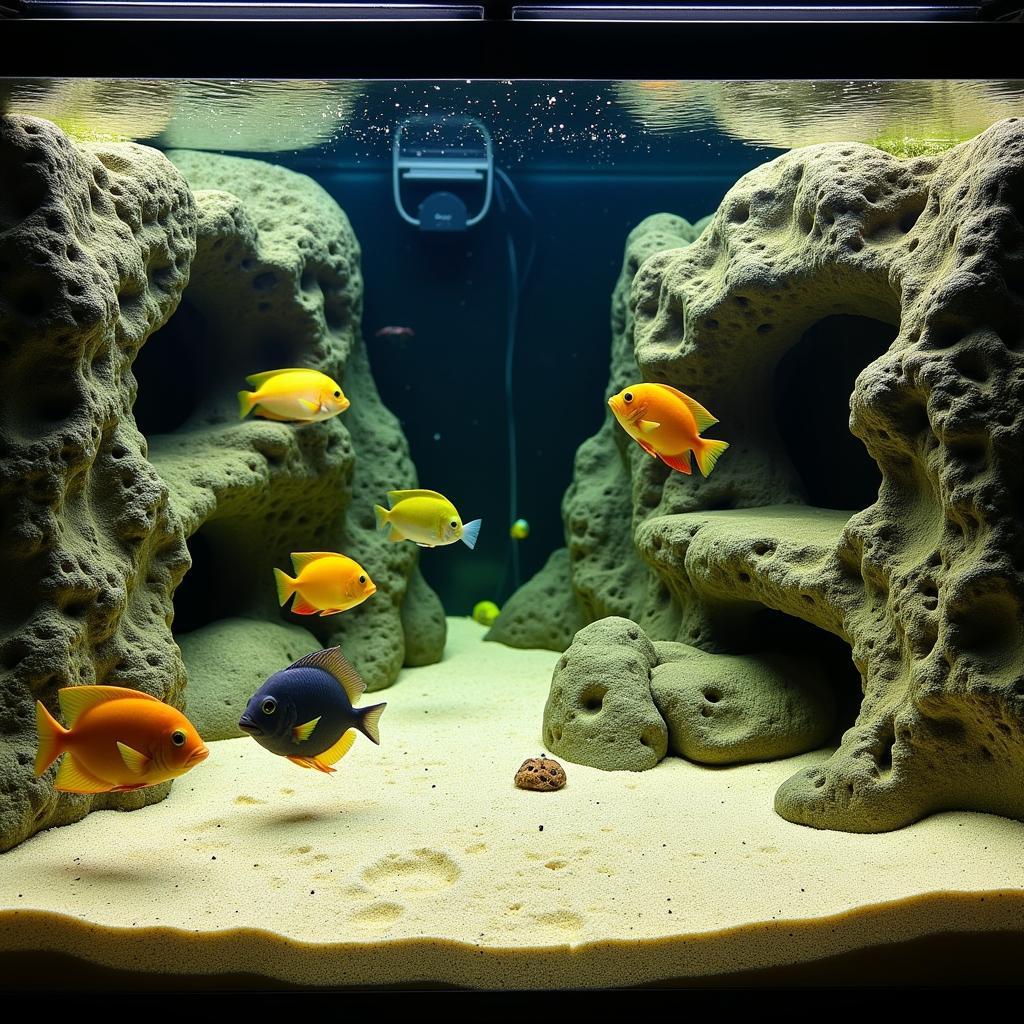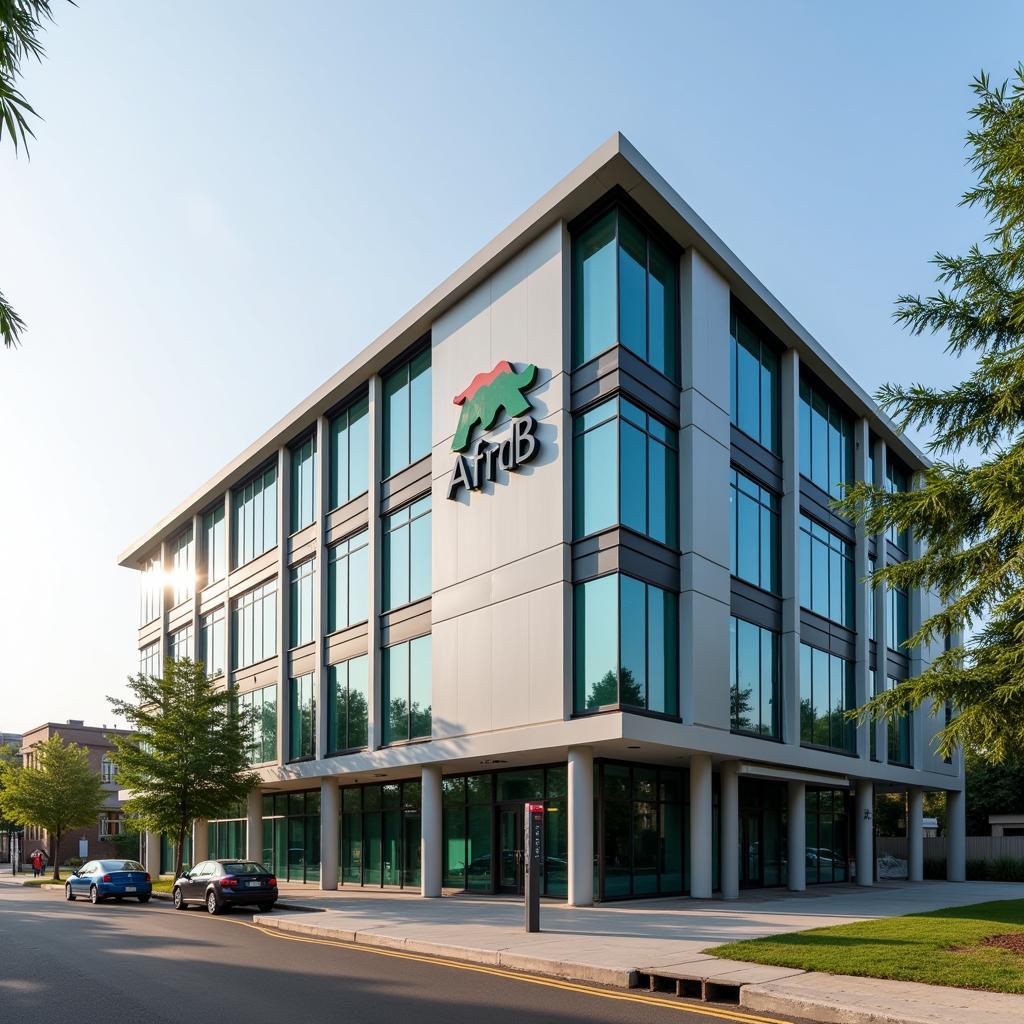Exploring the Vibrant World of African Cichlid Tanks
African cichlid tanks are a captivating window into the diverse ecosystems of the Great Rift Valley lakes. These vibrant and often aggressive fish bring a splash of color and a unique dynamic to any home aquarium. Whether you’re a seasoned aquarist or just starting out, understanding the intricacies of keeping African cichlids is crucial for their well-being and the success of your tank.
Setting Up Your African Cichlid Tank: A Step-by-Step Guide
Setting up an African cichlid tank requires careful planning and consideration. Unlike community tanks with peaceful inhabitants, cichlids have specific needs that must be met to replicate their natural habitat and minimize aggression.
- Choose the right tank size: African cichlids, even smaller species, need ample space to thrive. A minimum of 55 gallons is recommended for a small group, while larger tanks are necessary for more fish or larger species. Overcrowding can lead to increased aggression and stress.
- Water parameters: Replicating the hard, alkaline water conditions of the Rift Valley lakes is essential. This means maintaining a pH between 7.8 and 8.6 and a hardness of 10-20 dH. Regular water changes and testing are crucial for maintaining optimal water quality.
- Filtration and aeration: Robust filtration is paramount for African cichlid tanks. These fish produce a substantial amount of waste, and effective filtration is necessary to maintain water clarity and prevent the buildup of harmful toxins. Ample aeration is also vital to ensure adequate oxygen levels.
- Substrate and decor: A sandy substrate is ideal for African cichlids, allowing them to sift and dig as they would in their natural environment. Rocks and caves are also essential for providing hiding places and establishing territories, which helps to reduce aggression. Consider using rocks that buffer the pH, such as limestone or aragonite.
- Lighting: Moderate lighting is sufficient for African cichlids. Too much light can lead to excessive algae growth.
- Cycling the tank: Before introducing any fish, it’s essential to cycle the tank. This process establishes beneficial bacteria that break down harmful ammonia and nitrites.
 African Cichlid Tank Setup with Rocks and Sandy Substrate
African Cichlid Tank Setup with Rocks and Sandy Substrate
Understanding African Cichlid Behavior and Aggression
African cichlids are known for their vibrant colors and engaging personalities, but also for their territorial and sometimes aggressive behavior. Understanding their natural instincts is key to creating a harmonious tank environment.
- Territoriality: Cichlids are inherently territorial, especially during breeding. Providing ample hiding places and breaking up lines of sight with rocks and decor can help reduce territorial disputes.
- Hierarchy: A social hierarchy will naturally develop within the tank. Dominant fish will assert their dominance over others. This is a normal behavior, but excessive aggression should be monitored.
- Overstocking: Overcrowding can exacerbate aggression. Ensuring adequate space is crucial for maintaining a peaceful environment.
Choosing the Right African Cichlid Species for your Tank
With hundreds of African cichlid species to choose from, selecting the right mix for your tank can be daunting. Consider the following factors:
Compatibility:
- Mbuna: These rock-dwelling cichlids are known for their vibrant colors and active personalities, but they can also be quite aggressive.
- Peacocks: Generally more peaceful than Mbuna, peacocks are known for their stunning colors and graceful swimming patterns.
- Haps: These open-water cichlids are often larger and less aggressive than Mbuna, but they still require ample space.
Tank Size:
- Smaller tanks (55-75 gallons): Stick to smaller species and limit the number of fish to avoid overcrowding.
- Larger tanks (100+ gallons): Provide more options for larger species and larger groups.
“Choosing compatible cichlid species is paramount for a successful tank. Researching their individual needs and temperaments is essential before introducing them to your aquarium.” – Dr. Evelyn Nyerere, Aquatic Biologist.
Conclusion
Creating a thriving african cichlid tank is a rewarding experience. By understanding their specific needs, providing the right environment, and choosing compatible species, you can enjoy the beauty and vibrant personalities of these fascinating fish for years to come. Remember to research thoroughly before adding any new fish to your tank.
FAQ
- What is the ideal temperature for an african cichlid tank? (72-82°F)
- How often should I perform water changes in my cichlid tank? (25-50% weekly)
- Can I keep different types of African cichlids together? (Yes, but research compatibility carefully)
- What are the signs of aggression in African cichlids? (Fin nipping, chasing, and lip locking)
- How do I treat diseases in African cichlids? (Consult a veterinarian specializing in aquatic animals)
- What should I feed my African cichlids? (A high-quality cichlid-specific diet)
- How can I reduce aggression in my cichlid tank? (Provide ample hiding places and break up lines of sight)
For further information and assistance with your African Cichlid tank, explore other related articles on our website such as “Choosing the Right Filtration System for your African Cichlids” and “A Beginner’s Guide to Mbuna Cichlids”.
When you need support, please contact us: Phone: +255768904061, Email: kaka.mag@gmail.com Or visit us at: Mbarali DC Mawindi, Kangaga, Tanzania. We have a 24/7 customer service team.



